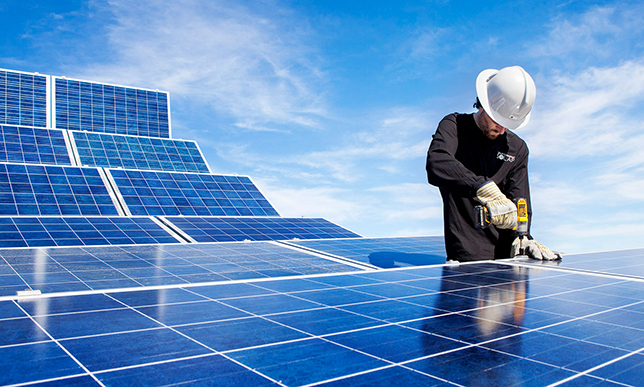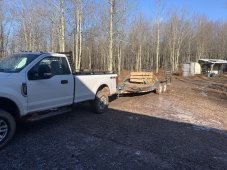Snowynorth
New Member
- Joined
- Jan 10, 2022
- Messages
- 177
I'm new! My electrical knowledge is low! I appreciate the info I've read here, and those that have helped me.
Maybe the links below will help some others. I posted them in another thread, but I think they could help a few more.
About 7-8 years ago I met a guy who had a roof mount array on an acreage about 2 miles from me. The panels did shed snow fairly well. He had a steep pitch. The next year I was driving past his house and saw that the panels were down. I stopped and talked to him, and he told me it was because his roof was leaking, and a fix was needed. I decided then that there would be no roof array for me. I told him to use quad sealant, or hot tar to seal every penetration before re installing the panels. Or better yet install a ground mount. He had plenty of space, and wasn't lacking in funds. He went back to the roof, but did make sure it was sealed properly.
I don't know much about electrical, but I do know a couple things about nasty weather up here in Alberta. I also know a bit about expansion, and contraction, and a few other basic things about construction. The wife and I built 4 houses and renovated another 5 when we were younger. We lived in them long enough to be considered primary residence, and not subject to tax. Then sold them at a profit, and started again.
I was first thinking about the biggest panels I could get and using less of them, but knowing the stress, possible frame twisting, the metal frames wanting to expand and contract while being firmly mounted, and the support they would need with high wind speeds, and no roof behind them, I decided to go with 60 cell, or 120 cell 1/2 cut and nothing more. I think big panels withstand better on a roof, where I would never install, unless I absolutely had too. Because it's a ground mount, and exposed to the wind I am also going gap 12" +- between each vertical set of 3 to reduce wind resistance. The bottom will be 5' +- from ground level, to handle snow shedding.
For those in the snow and cold. Here are a couple links that could help you. We built 3 small cabins on screw piles at our hobby/party farm. I dug the piles in 12' for a reason.
 bestlife52.com
bestlife52.com
https://www.cbc.ca/news/canada/calgary/frozen-pipes-homeowners-frosted-calgary-1.5051182
I understand the average person who hasn't dealt with it, but did municipalities not understand frost lines years ago? I'm glad I did.

 www.nait.ca
www.nait.ca
I hope I wasn't to wordy. For the new folks like me, there is more to consider with solar, then the size, and configuration of your electrical system.
Maybe the links below will help some others. I posted them in another thread, but I think they could help a few more.
About 7-8 years ago I met a guy who had a roof mount array on an acreage about 2 miles from me. The panels did shed snow fairly well. He had a steep pitch. The next year I was driving past his house and saw that the panels were down. I stopped and talked to him, and he told me it was because his roof was leaking, and a fix was needed. I decided then that there would be no roof array for me. I told him to use quad sealant, or hot tar to seal every penetration before re installing the panels. Or better yet install a ground mount. He had plenty of space, and wasn't lacking in funds. He went back to the roof, but did make sure it was sealed properly.
I don't know much about electrical, but I do know a couple things about nasty weather up here in Alberta. I also know a bit about expansion, and contraction, and a few other basic things about construction. The wife and I built 4 houses and renovated another 5 when we were younger. We lived in them long enough to be considered primary residence, and not subject to tax. Then sold them at a profit, and started again.
I was first thinking about the biggest panels I could get and using less of them, but knowing the stress, possible frame twisting, the metal frames wanting to expand and contract while being firmly mounted, and the support they would need with high wind speeds, and no roof behind them, I decided to go with 60 cell, or 120 cell 1/2 cut and nothing more. I think big panels withstand better on a roof, where I would never install, unless I absolutely had too. Because it's a ground mount, and exposed to the wind I am also going gap 12" +- between each vertical set of 3 to reduce wind resistance. The bottom will be 5' +- from ground level, to handle snow shedding.
For those in the snow and cold. Here are a couple links that could help you. We built 3 small cabins on screw piles at our hobby/party farm. I dug the piles in 12' for a reason.
Fence Post Keeps Popping Up? Here’s How To Stop Frost Heaves
If the winter frost heaves your fence posts, follow this guide to solve this problem once and for all.
https://www.cbc.ca/news/canada/calgary/frozen-pipes-homeowners-frosted-calgary-1.5051182
I understand the average person who hasn't dealt with it, but did municipalities not understand frost lines years ago? I'm glad I did.

Solar panels shine despite winter's blast, NAIT study finds
Five-year study by alternative energy experts shows snow has little impact on panels' effectiveness
I hope I wasn't to wordy. For the new folks like me, there is more to consider with solar, then the size, and configuration of your electrical system.





